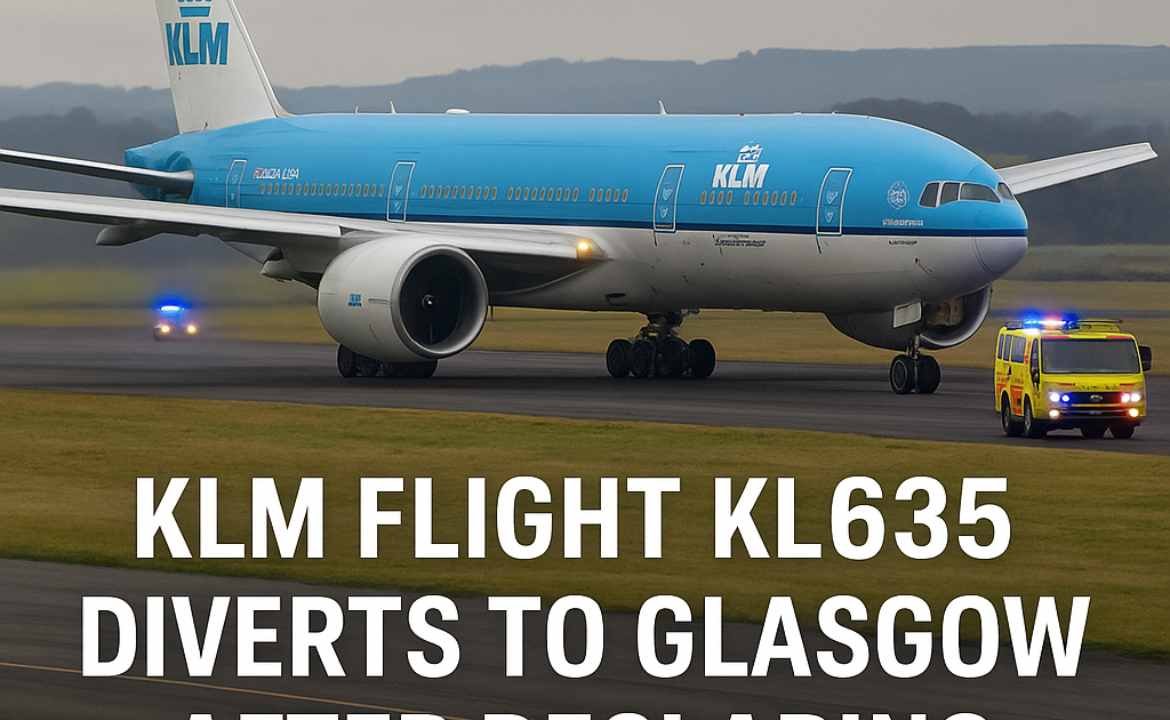In a recent incident that caught the attention of aviation enthusiasts and travelers alike, <a href=”#”>KLM Flight KL635 Diverts to Glasgow After Declaring Emergency</a> mid-flight. The unexpected diversion of this transatlantic journey has sparked curiosity about what led to this in-flight change and how such emergencies are managed.
KLM Royal Dutch Airlines is known for its safety and efficiency, making any emergency involving their aircraft a serious matter. The diversion to Glasgow ensured the safety of everyone onboard, emphasizing the importance of rapid decision-making in aviation emergencies.
What Happened on KLM Flight KL635?
KLM Flight KL635, which typically operates from Amsterdam to Houston, was en route over the North Atlantic when the crew alerted air traffic control of an emergency. Following standard aviation protocols, the pilots made a swift but safe decision to reroute the flight.
Reason Behind the Emergency
Although official details are limited, early indications suggest a technical issue or medical emergency may have prompted the flight crew to request an unscheduled landing. Such occurrences are not uncommon in international air travel, and pilots are trained to make immediate diversions to the nearest suitable airport when necessary.
Safe Landing in Glasgow
Once the decision was made, the flight crew coordinated with air traffic control in the United Kingdom, leading to a controlled descent and safe landing in Glasgow. Emergency services were on standby, a routine protocol for any declared emergency landing. Thankfully, all passengers and crew disembarked without harm, and the airline provided assistance and accommodations where needed.
The Importance of Emergency Diversions in Aviation
Modern aviation is built around safety. When flights such as KLM KL635 declare an emergency, it highlights the strength of the safety systems in place. Airlines, pilots, and airports follow rigid guidelines to ensure that unexpected situations are handled without delay.
Types of In-Flight Emergencies
Airborne emergencies can arise from various scenarios, including:
- Medical emergencies
- Cabin pressure anomalies
- Technical malfunctions
- Security threats
While many assume such diversions indicate severe problems, it’s often a precautionary action to avoid further complications during long-haul travel.
Why Glasgow?
Glasgow Airport is one of the UK’s busiest international airports, equipped to handle diverted aircraft efficiently. It is strategically located and often used for Atlantic flight diversions, making it an ideal choice for rerouting KLM Flight KL635.
Passenger Experience and Airline Response
Passengers aboard the diverted flight reported calm and composed handling by the flight crew. Their swift response and clear communication helped avoid panic, and most travelers appreciated the professionalism.
Communication and Support
KLM followed up the diversion by offering timely information and assistance to passengers. Hotels, meals, and rebooking services were provided to minimize the inconvenience. This kind of customer support plays a crucial role in maintaining trust and loyalty among frequent flyers.
Rebooking and Flight Resumption
After resolving the issue, KLM made arrangements for passengers to continue their journey to Houston. Depending on the nature of the emergency, a replacement aircraft may have been deployed, or the original aircraft resumed service after technical clearance.
Aviation Protocols for Emergency Diversions
When an aircraft declares an emergency, it triggers a coordinated response involving multiple stakeholders:
- Pilots follow established protocols.
- Air Traffic Control provides priority clearance.
- Ground Emergency Services are alerted and prepared.
- Airline Operations coordinates passenger care.
Each player has a defined role, ensuring the safety and well-being of all onboard.
Regulatory Oversight
Aviation authorities also monitor such incidents closely. Post-incident inspections and reporting help improve industry practices and prevent future occurrences. Airlines like KLM are held to high operational standards, making such events rare but well-managed.
Lessons from the KLM KL635 Diversion
The incident involving KLM Flight KL635 diverting to Glasgow reinforces the effectiveness of aviation safety practices. While passengers may find such events unsettling, the smooth handling of the situation reflects the high level of preparedness within the aviation community.
Key Takeaways
- Emergency diversions are safety-first decisions.
- Pilot training and airport preparedness are essential.
- Airline support during disruptions builds customer confidence.
This incident also shows the importance of communication and passenger care during unexpected changes in travel plans.
Final Thoughts
The diversion of KLM Flight KL635 to Glasgow after declaring an emergency was handled with precision and care. While the exact cause remains undisclosed, what matters most is the safety of all individuals involved, and that objective was successfully achieved.
